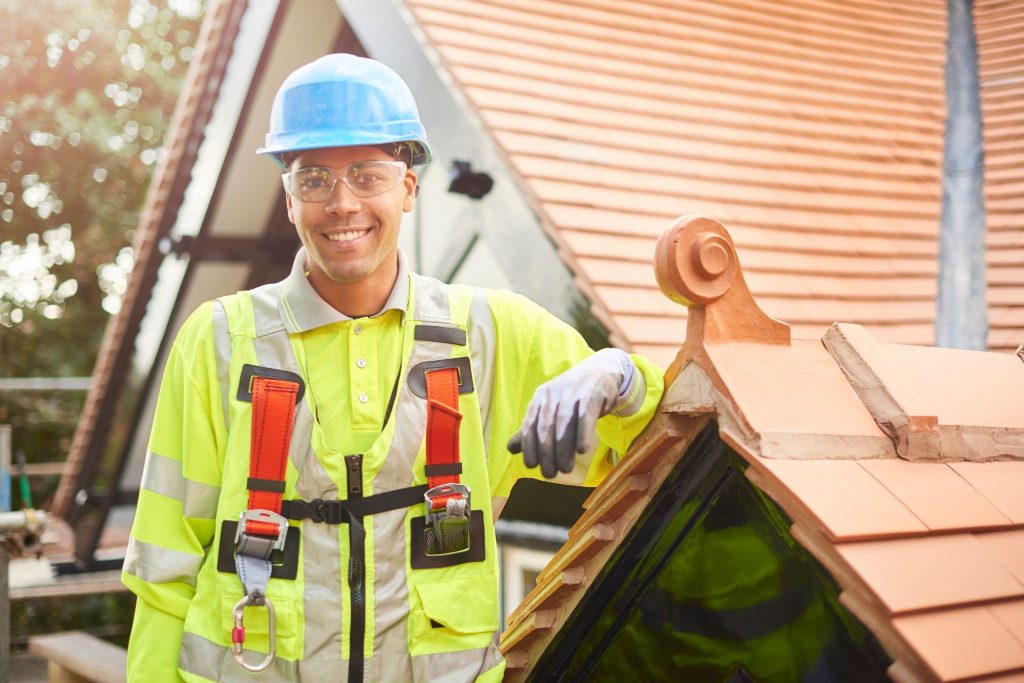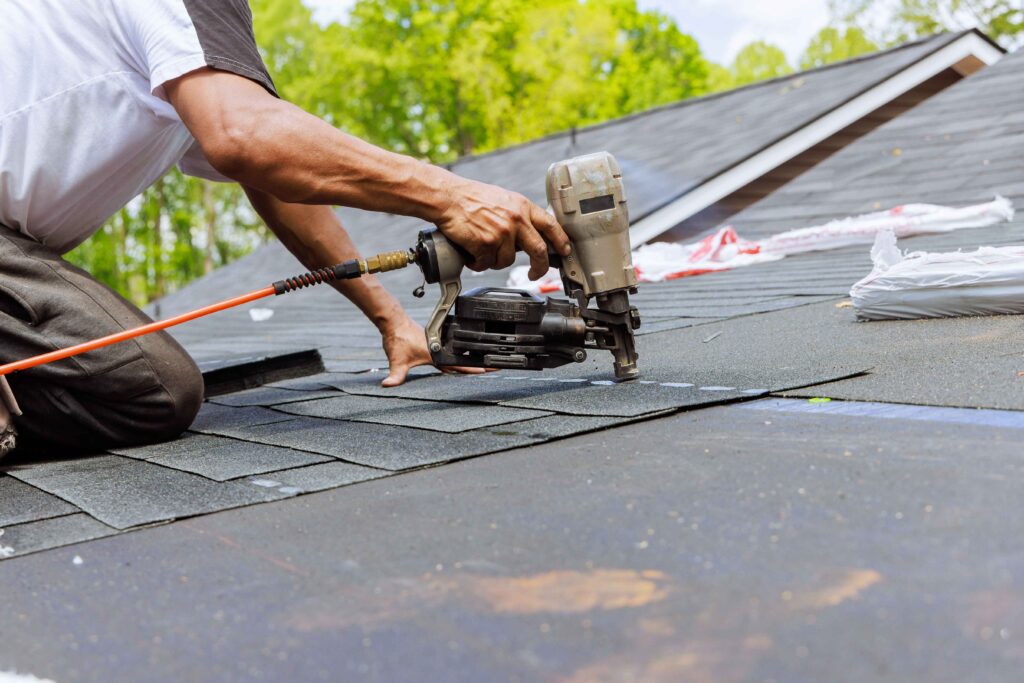A Comprehensive Overview to the Several Kinds Of Roofs You Can Select From
When thinking about the myriad of roofing choices available today, it comes to be noticeable that selecting the appropriate kind can dramatically affect both the visual appeal and functional performance of a building. From the timeless charm of asphalt shingles to the modern efficiency of steel roof covering, each product presents its very own benefits and challenges. In addition, the increase of environmentally friendly choices like green roofs reflects an expanding pattern towards sustainability in construction. Understanding these variants is vital for making an informed choice that aligns with your certain needs and choices. What factors should you think about in this option procedure?
Asphalt Roofing Shingles
Asphalt tiles are one of one of the most prominent roof materials in The United States and copyright, known for their cost-effectiveness and versatility. These roof shingles are largely composed of a fiberglass mat coated with asphalt and mineral granules, which provide both waterproofing and aesthetic appeal. Offered in a variety of shades and designs, asphalt roof shingles can match various building layouts, making them an attractive choice for property owners.
Among the crucial benefits of asphalt roof shingles is their cost. Contrasted to other roof covering materials, they are fairly low-cost to purchase and mount, making them accessible to a wide variety of spending plans. Furthermore, asphalt roof shingles have an uncomplicated installment procedure, usually calling for much less time and labor than alternate roof systems.
Longevity is one more considerable aspect, with numerous asphalt roof shingles providing guarantees that last in between 20 to half a century, depending on the top quality and kind chosen. Regardless of their sensitivity to weather conditions, such as high winds and hailstorm, improvements in innovation have brought about the advancement of impact-resistant options.

Steel Roof
Steel roofing has acquired traction amongst home owners and home builders alike because of its outstanding durability and long life. Generally constructed from materials such as steel, light weight aluminum, copper, or zinc, metal roof coverings can endure harsh climate condition, consisting of hefty rain, hail storm, and high winds. Their resistance to rust and rust better enhances their life expectancy, typically surpassing half a century with appropriate upkeep.
Along with their resilience, metal roof coverings are light-weight, making them simpler to set up contrasted to typical roof products. This can lead to lower labor expenses and reduced architectural assistance demands. Steel roof covering systems are available in a range of styles, colors, and finishes, allowing property owners to achieve a customized aesthetic that complements their property.
Energy effectiveness is another significant advantage of metal roofing. Its reflective residential or commercial properties can help lower air conditioning expenses by dispersing sunshine, thus minimizing warm absorption. Many metal roof covering options are additionally made from recycled products, adding to eco-friendly structure practices.
Ceramic Tile Roofs
What makes floor tile roofs a popular choice among home owners in various climates? Ceramic tile roofing systems are renowned for their longevity and aesthetic appeal, making them a preferred choice throughout diverse geographical regions. Made up of materials like clay or concrete, these roofs can stand up to severe weather problems, including hefty rains, extreme warmth, and solid winds.

Among the most substantial benefits of tile roof coverings is their durability. With proper upkeep, they can last half a century or more, surpassing several various other roof materials. Additionally, floor tile roofs give exceptional insulation, which assists in controling interior temperature levels and can bring about power cost savings. Their fireproof homes even more enhance their appeal, using an added layer of security.
Tile roof coverings are additionally available in a vast array of colors and designs, permitting home owners to select layouts that match their building aesthetics. The first setup price might be higher than other roof alternatives, the lasting benefits frequently warrant the financial investment. In general, ceramic tile roofings incorporate beauty, resilience, and performance, making them an outstanding option for homeowners seeking a reliable roofing option.

Flat Roofs
Level roof coverings are a useful option for lots of industrial and residential buildings, particularly in metropolitan locations where taking full advantage of usable room is essential. Keep Dry Roofing LLC. Their horizontal style permits easy setup of a/c systems, photovoltaic panels, and roof yards, making them a functional alternative for modern-day style
Among the main benefits of flat roofs is their cost-effectiveness. The materials and labor required for installation are generally cheaper than those for angled roofs. Usual materials utilized for level roof covering consist of built-up roof covering (BUR), modified asphalt, and single-ply membrane click to find out more layers like TPO and EPDM. Each material has its own benefits in terms of resilience, insulation, and weather resistance.
Nevertheless, flat roof coverings do call for cautious attention to drainage to stop water pooling, which can lead to leakages and structural damage. Normal upkeep, including inspections and cleansing of rain gutters and drains, is essential to guarantee longevity.
Eco-friendly Roofings
How can integrating nature right into metropolitan design improve sustainability? Eco-friendly roofing systems, also called living roof coverings, exhibit this integration by providing a distinct service to city ecological difficulties. These roofing systems are identified by a layer of plants grown over a water-proof membrane layer, advertising biodiversity while reducing city warm island results.
The benefits of environment-friendly roofing systems prolong beyond visual appeals. They play a critical duty in stormwater management by taking in rain, which decreases overflow and lessens the concern on water drainage systems. This absorption additionally helps in filtering system contaminants and enhancing air high quality. Furthermore, environment-friendly roofing systems add to energy performance by providing all-natural insulation, thereby decreasing heating & cooling costs for structures.
Along with ecological advantages, green roofs supply social advantages. They develop eco-friendly spaces in largely inhabited locations, cultivating area communication and improving mental well-being (Keep Dry Roofing LLC). As urban areas her response proceed to broaden, the application of environment-friendly roofings can dramatically add to lasting city preparation
Final Thought
In recap, More Bonuses the choice of roof materials substantially influences the toughness, visual appeals, and power performance of a structure. Each kind of roof covering, consisting of asphalt tiles, metal roofing, ceramic tile roofing systems, flat roof coverings, and environment-friendly roofings, provides one-of-a-kind advantages fit to different demands and choices.